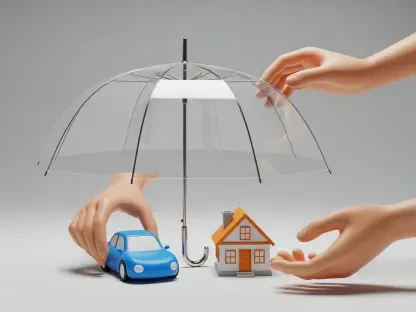Land subsidence is emerging as a critical challenge, exacerbating the already complex landscape of climate change effects on global housing. No longer confined to traditional causes, subsidence—a process where the ground beneath structures sinks and shifts—now poses a significant threat due to climate change. Europe, known for its clay-heavy soil and rapid temperature increases, stands at the epicenter of this intensifying issue. This industry report will delve into why this phenomenon is becoming increasingly prevalent, how it affects homeowners worldwide, and what measures can be taken to mitigate its significant impacts.
Understanding Subsidence
Subsidence is defined as the downward movement of the Earth’s surface, often leading to structural instability in buildings and homes. Traditionally, this has been attributed to causes such as groundwater extraction, mining, and seismic activity. However, climate change has introduced new challenges, such as fluctuating soil moisture levels—rains increase soil bulk, while heat causes it to contract. Europe’s status as the fastest-warming continent amplifies this issue, presenting a pressing concern for its homeowners.
Much of Europe, with its specific soil composition and dense populations, faces pronounced risks from subsidence. Cities historically built on clay-dense regions, like London and Paris, are increasingly vulnerable. This region-specific issue underscores the critical need for local regulatory bodies to address subsidence with urgency, as the traditional infrastructure isn’t resilient enough against these evolving challenges.
Current Trends and Impact on Homeowners
Increasing Incidence and Awareness
Globally, reports of subsidence are growing, correlating with rising temperatures and unpredictable precipitation patterns. Public awareness around this issue is also increasing, with media emphasizing its connection to climate change. Homeowners are becoming more cognizant of the risks, leading to heightened scrutiny over the potential impacts on property values and stability.
Financial Implications and Insurance Challenges
Subsidence has already led to billions in damages, with financial estimates highlighting a future rife with potential losses. European financial institutions face damages running into trillions, placing an immense burden on governments, insurers, and homeowners alike. This financial strain prompts a reevaluation of existing insurance models, as the industry grapples with sustainability concerns in the wake of escalating claims.
Insurers find themselves in a bind, struggling to adapt their models to accommodate this burgeoning threat. As subsidence-related claims increase, the pressure mounts for these institutions to reconsider their risk exposure. In some regions, insurers are rethinking their presence entirely, mirroring similar shifts seen in areas prone to other natural disasters.
Challenges and Complexities
Infrastructure resilience remains one of the most significant challenges in tackling subsidence. Many existing structures were not designed to cope with the shifting ground conditions exacerbated by climate impacts. Retrofitting and reinforcing homes can be an expensive and complex endeavor, often leaving homeowners with challenging decisions around cost and feasibility.
Regulatory frameworks also present complexities, as they might not have kept pace with the rapid evolution of subsidence risks. As legal systems wrangle with these issues, emerging strategies focus on structural reinforcements and community-driven approaches to mitigate these impacts effectively.
Regulatory and Policy Considerations
Current laws and standards addressing subsidence risks vary significantly between regions. While some governments have proactively shaped policies to combat these challenges, others lag in providing a robust framework. These policies often hinge on effective collaboration between governments, insurers, and homeowners, requiring comprehensive understanding and cooperation.
Regulatory bodies play a crucial role in establishing and enforcing the standards that will govern future construction and restoration efforts. By incentivizing sustainable practices and fostering collaboration, policymakers can better manage subsidence impacts and drive forward resilient solutions.
Future Outlook
Looking ahead, the risk of subsidence is expected to continue growing, with forecasts suggesting a marked increase in affected areas and financial damages. Technological advancements may offer some respite, as emerging mitigation techniques like advanced soil stabilization and structural reinforcements become more widely adopted.
The interplay of economics, technology, and policy will shape the societal shifts stemming from subsidence-related impacts. These developments call for an adaptable approach from stakeholders to ensure communities remain resilient against growing climate threats.
Conclusion and Recommendations
In reviewing subsidence as an escalating climate challenge, this report emphasizes the importance of holistic strategies to manage its impacts. Subsidence poses not only an immediate threat to infrastructure but also highlights ongoing systemic vulnerabilities in existing insurance and regulatory frameworks.
To address these concerns, stakeholders should encourage policy adjustments and cleave to robust infrastructure investments. By investing in resilience and fostering strong community partnerships, both public and private sectors can adequately prepare for and adapt to the future impacts of subsidence. The path forward requires synergistic efforts to innovate strategies that mitigate these complexities, ensuring a sustainable future for affected regions and communities.









